I have been using a micro switch connected to an RS232/USB serial converter cable on my windows PC to start stop and reset a timer.
The program runs smoothly most of the time but every so often updating the timer widget gets stuck running and the timer will not stop.
With the serial protocol i want to receive 1 byte b'\x00' for off and anything that's not b'\x00' should signify on.
I have replaced the micro switch with button widgets to simulate the switch and don't get the same error or i just have not kept at it for long enough.
It could be an issue with the RS232 causing an error i cannot see but my knowledge on this is sketchy and have exhausted all avenues looking online for any information on this.
import time
import sys
import serial
import threading
from tkinter import *
from tkinter import ttk
class Process(Frame):
def __init__(self, root, parent=None, **kw):
Frame.__init__(self, parent, kw)
self.root = root
self._cycStart = 0.0
self._cycTimeElapsed = 0.0
self._cycRunning = 0.0
self.cycTimeStr = StringVar()
self.cycTime_label_widget()
self.ser = serial.Serial(
port='COM4',
baudrate=1200,
timeout=0
)
self.t1 = threading.Thread(target=self.start_stop, name='t1')
self.t1.start()
def initUI(self):
root.focus_force()
root.title("")
root.bind('<Escape>', lambda e: root.destroy())
def cycTime_label_widget(self):
# Make the time label
cycTimeLabel = Label(root, textvariable=self.cycTimeStr, font=
("Ariel 12"))
self._cycleSetTime(self._cycTimeElapsed)
cycTimeLabel.place(x=1250, y=200)
cycTimeLabel_2 = Label(root, text="Cycle Timer:", font=("Ariel
12"))
cycTimeLabel_2.place(x=1150, y=200)
def _cycleUpdate(self):
""" Update the label with elapsed time. """
self._cycTimeElapsed = time.time() - self._cycStart
self._cycleSetTime(self._cycTimeElapsed)
self._cycTimer = self.after(50, self._cycleUpdate)
def _cycleSetTime(self, elap):
""" Set the time string to Minutes:Seconds:Hundreths """
minutes = int(elap/60)
seconds = int(elap - minutes*60.0)
hseconds = int((elap - minutes*60.0 - seconds)*100)
self.cycTimeStr.set('%02d:%02d:%02d' % (minutes, seconds,
hseconds))
return
def cycleStart(self):
""" Start the stopwatch, ignore if running. """
if not self._cycRunning:
self._cycStart = time.time() - self._cycTimeElapsed
self._cycleUpdate()
self._cycRunning = 1
else:
self.cycleReset()
def cycleStop(self):
""" Stop the stopwatch, ignore if stopped. """
if self._cycRunning:
self.after_cancel(self._cycTimer)
self._cycTimeElapsed = time.time() - self._cycStart
self._cycleSetTime(self._cycTimeElapsed)
self._cycRunning = 0
self._cycTimeElapsed = round(self._cycTimeElapsed, 1)
self.cycleTimeLabel = Label(root, text=(self._cycTimeElapsed,
"seconds"), font=("Ariel 35"))
self.cycleTimeLabel.place(x=900, y=285)
self.cycleReset()
def cycleReset(self):
""" Reset the stopwatch. """
self._cycStart = time.time()
self._cycTimeElapsed = 0
self._cycleSetTime(self._cycTimeElapsed)
def start_stop(self):
while True :
try:
data_to_read = self.ser.inWaiting()
if data_to_read != 0: # read if there is new data
data = self.ser.read(size=1).strip()
if data == bytes(b'\x00'):
self.cycleStop()
print("Off")
elif data is not bytes(b'\x00'):
self.cycleStart()
print("On")
except serial.SerialException as e:
print("Error")
if __name__ == '__main__':
root = Tk()
application = Process(root)
root.mainloop()
I expect the timer to start running when the micro switch is pressed. when depressed it should stop and reset back to zero and wait for the next press
